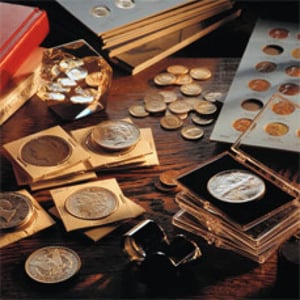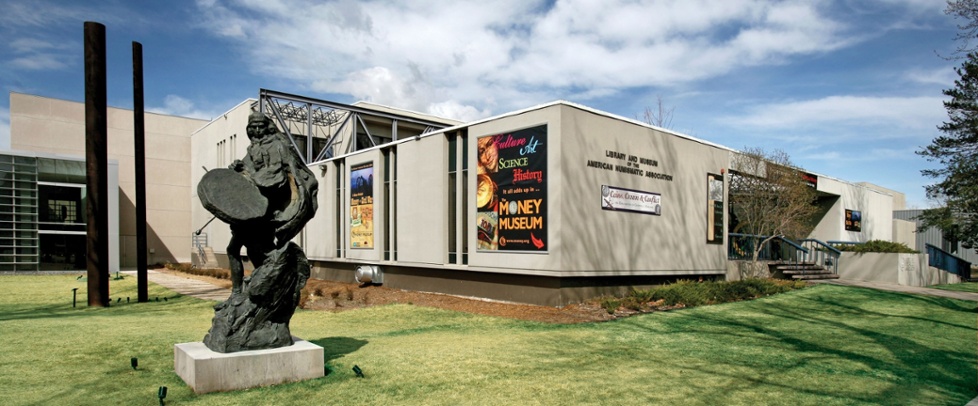Storing Your Coin Collection
Whether your concern is safety, appearance or expense, there are storage options for every numismatist.
All things are affected by the passage of time, and coins are no exception. Some effects are rather conspicuous — surfaces marred by contact with other coins or design details worn away by circulation. It is less obvious, but no less important, that coins need protection after they become part of your collection. The insidious effects of exposure to the atmosphere and other hazards can alter a coin's appearance over time, turning prized pieces into shadows of their former selves.
Fortunately, you can preserve the beauty of your collection with some careful thought and a modest expenditure on storage. Holders allow coins to be viewed clearly and stored safely.
"Though you cannot stop the hands of time, wise storage choices can keep your coins safe and attractive into the future."
 Most holders for single coins share a common size — two inches square. Cardboard "2 x 2s" have coin-sized windows covered by a thin layer of Mylar (polyester film) and typically are stapled shut. Flips, most with two plastic pouches, are the most flexible. Hard-plastic holders generally are round or square, two-piece capsules.
Most holders for single coins share a common size — two inches square. Cardboard "2 x 2s" have coin-sized windows covered by a thin layer of Mylar (polyester film) and typically are stapled shut. Flips, most with two plastic pouches, are the most flexible. Hard-plastic holders generally are round or square, two-piece capsules.
Even if you are careful with loose coins, touching them only at the edges, they still are vulnerable. Without a holder, a coin's surfaces can be harmed by wear, fingerprints or contact with other coins. Holders are effective and convenient shields against these dangers.
Coin holders also can inhibit the damaging effects of air and moisture, which discolor coins over time. Flips are not particularly airtight, while hard-plastic holders generally have the tightest seals. Some contain anti-corrosive material to neutralize any harmful gases. Though you may not be able to achieve perfect, airtight protection, you can take significant steps to minimize long-term risk to your collection.
Take care to avoid the unfortunate irony of choosing storage material that can harm your coins. Direct contact with paper or cardboard containing sulfur, for example, can discolor coins.
Be sure that 2 x 2s are free of harmful cardboard dust and, if necessary, carefully flatten the staples with pliers to avoid scratching adjacent coins. Avoid flips made with PVC (polyvinyl chloride), which can ruin a coin's surfaces over time. If you have any doubt that a flip is PVC-free, replace it immediately. And above all, always exercise caution when transferring a coin in or out of its holder.
 Each style of holder offers different amenities. You can write descriptive information on a 2 x 2's cardboard exterior or a flip's paper insert. Flips and 2 x 2s are slimmer than hard-plastic holders. Hard-plastic holders and 2 x 2s are available with openings of various sizes, while flips use a one-size-fits-all approach.
Each style of holder offers different amenities. You can write descriptive information on a 2 x 2's cardboard exterior or a flip's paper insert. Flips and 2 x 2s are slimmer than hard-plastic holders. Hard-plastic holders and 2 x 2s are available with openings of various sizes, while flips use a one-size-fits-all approach.
When buying holders, be aware of trade-offs regarding safety and cost. Made of strong, inert materials, hard-plastic holders are the most protective and expensive. They cost a dollar or more each, versus a few cents for 2 x 2s or flips.
But skimping on storage can be shortsighted because appealing or valuable coins deserve first-rate protection from the elements. One effective strategy is to keep the bulk of your collection in 2 x 2s or flips, with expensive or high-grade pieces housed in hard plastic.
>> Download Free Collection / Inventory Spreadsheet Template <<
Holders can be stored in small boxes or transparent album pages in a binder. But pre-printed albums with spaces for each coin in a particular series also are a convenient way to house date or mintmark collections. Again, hard plastic and other inert materials provide the most protection.
Pay attention to the overall storage environment. Keep your coins in a stable, cool and dry location. If humidity is a problem, use desiccants to absorb atmospheric moisture.
Proper storage is absolutely critical for protecting and preserving your coins. Though you cannot stop the hands of time, wise storage choices can keep your coins safe and attractive into the future.
Originally printed in The Numismatist.
About the American Numismatic Association
The American Numismatic Association (ANA) is a nonprofit organization dedicated to educating and encouraging people to study and collect coins and related items. The Association serves the academic community, collectors and the general public with an interest in numismatics.
The ANA helps all people discover and explore the world of money through its vast array of educational programs including its museum, library, publications, conventions and numismatic seminars and webinars.


